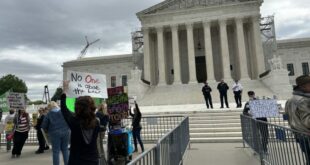President Joe Biden is exploring new student debt relief programs designed to assist various categories of borrowers.
These initiatives come in the wake of the Supreme Court’s decision to invalidate Biden’s previous attempt at mass loan forgiveness. On Monday, the Education Department unveiled the text of these proposals, detailing four distinct student debt relief programs. Each of these programs targets different groups of borrowers and their specific needs.
1. **Debt Balloon Relief:** The Education Department’s proposals would involve canceling the debts of borrowers whose loan balances have significantly increased over time due to interest accrual. Many students end up owing more than they originally borrowed because of the accumulation of interest. This program aims to provide relief to such borrowers.
2. **Long-Term Repayment Relief:** The proposals also include plans to eliminate the student loans of those who have been repaying their debts for 25 years or more. This group of borrowers has been faithfully making payments for a quarter of a century or longer, and the relief program recognizes their dedication.
3. **College Performance Relief:** The Education Department wants to create new student debt relief programs that offer forgiveness to borrowers who attended colleges or institutions that left students with “unreasonable debt loads” or have high student loan default rates. This initiative aims to help those who were adversely affected by their choice of educational institution.
4. **Automatic Eligibility Relief:** There are also plans to automatically provide loan forgiveness to borrowers who are eligible under existing debt relief programs but have not applied. This initiative seeks to simplify the debt relief process for eligible borrowers.
These draft proposals will be presented to a federal rulemaking committee for further consideration. However, the Education Department has not yet developed specific definitions for borrowers facing a “financial hardship.” Ideas for structuring this aspect of the relief program will be solicited from the rulemaking panel.
The approach of dividing the relief program into discrete categories of borrowers, each with its specific criteria, reflects the Biden administration’s strategy to provide targeted assistance.
This approach is different from the earlier, across-the-board relief program that was based on pandemic-related emergency powers. It is unclear how the total number of eligible borrowers under these new proposals compares to the approximately 40 million Americans who were estimated to be eligible for up to $10,000 or $20,000 of debt relief under the previous program that was invalidated by the Supreme Court.
Biden’s administration has been exploring the use of the Higher Education Act and other legal authorities to provide debt relief to as many borrowers as possible. These proposals represent the administration’s latest efforts to address the issue of student debt and help borrowers manage their financial burdens.
 Poli Alert Political & Civics
Poli Alert Political & Civics



